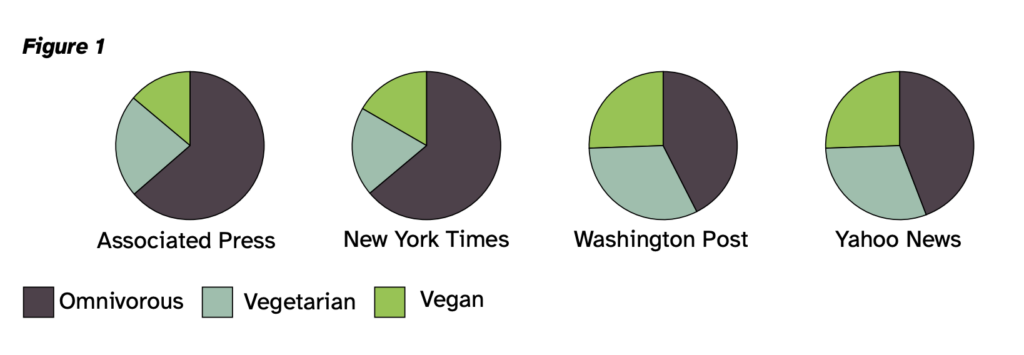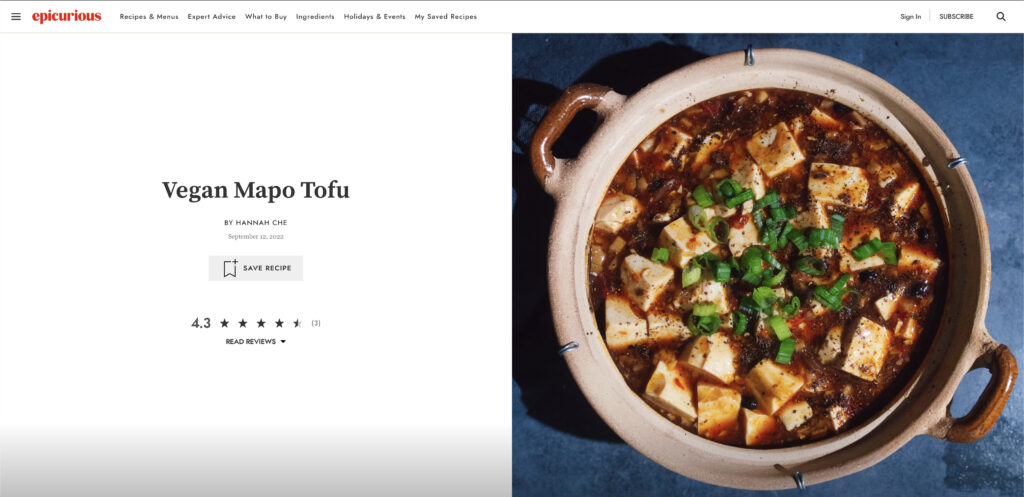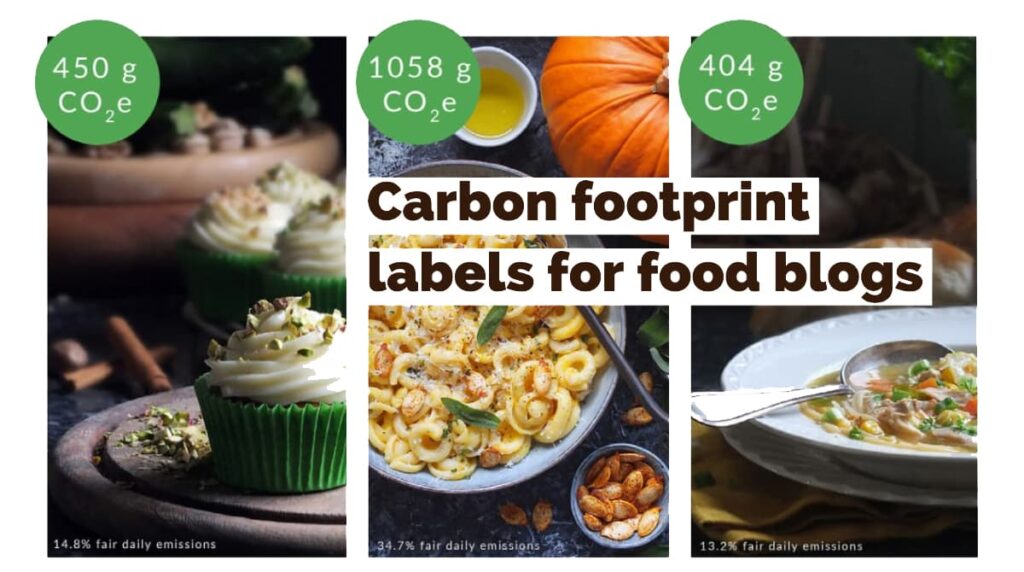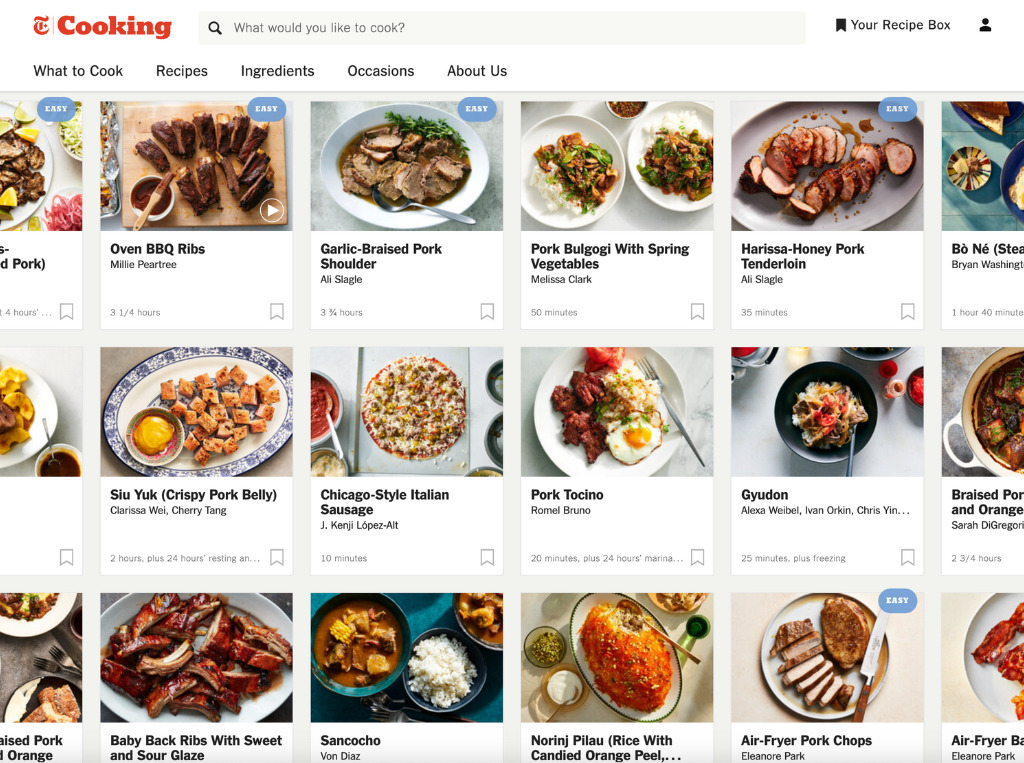Meat Dishes Dominate Recipe Sections of Mainstream Media, from NYT to BBC & The Guardian – New Report
7 Mins Read
A new report by the Better Food Foundation and Sentient Media analyzed eight news outlets – four each in the UK and the US – and found that five have recipe sections dominated by meat-based dishes. In an effort to find the link between climate media and animal agriculture, the researchers suggested five actions to help new outlets nudge readers toward more climate-friendly eating habits.
The research, titled ‘Recipe for Succes’, analysed the recipe sections of the AP, the New York Times, the Washington Post, and Yahoo News in the US, and the Guardian, the BBC, the Independent and ITV in the UK. The authors deemed all 8 outlets as having “responsible climate reporting (i.e., in keeping with scientific consensus)”. The data included an analysis of at least 100 recipes from each outlet, calculating the share of plant-based recipes to ‘omnivorous’ and vegetarian ones.
US vs UK food media

The report found that among the US outlets, 53.6% of recipes were meat-based, with only 20.2% being vegan. The New York Times had the highest percentage of omnivorous recipes at 63.9%, but vegan recipes (19.7%) outnumbered vegetarian ones (16.4%). This is despite the publication scoring highly in an assessment of its climate coverage, with 90% of articles crediting anthropogenic activity as a significant driver of climate change.
It’s followed closely by the AP, which had 63.6% meat-based recipes, and only 13.6% plant-based ones. Meanwhile, Yahoo News (44.4%) and the Washington Post (42.5%) were two of the only three outlets in the study where meat-based dishes accounted for less than 50% of their recipe share. Both also had a quarter of vegan recipes, at 25.4%.

The third such outlet was the Guardian in the UK, which had 49.1% of meat-based recipes. Its share of fully plant-based dishes came to 18.4%. But like the US, British mainstream media too skewed toward meat-heavy, with an average of 60.6% of recipes being omnivorous, and only 11.6% being vegan.
ITV had the most meat-based recipes in the study at 78.2%, and the fewest plant-based dishes at 3%. Meat-centric dishes accounted for 63.9% of the BBC’s recipes, and 51% at the Independent, but plant-based recipes amounted to just 12.3% and 12.6%, respectively.
The results show that US media features fewer meat-based recipes (despite them still commanding the majority) than the UK, while vegetarianism still trumps veganism in both countries. “The failure of most news outlets to reconcile their climate reporting with their recipe sections is symptomatic of a larger failure,” the study reads.
It refers to research by Sentient Media and Faunalytics showed that 93% of climate reporting doesn’t mention animal agriculture at all. This is despite evidence revealing that vegan diets can cut emissions, water pollution and land use by 75% compared to a meat-rich diet. It’s also perhaps why the US’s higher share of plant-based recipes is surprising, given that 74% of Americans don’t think eating meat can reduce their climate emissions.
The role of food media in climate-friendly eating

Asked if food and recipe media have a role to play in encouraging climate-friendly diets, the Washington Post’s food and dining editor Joe Yonan said: “Absolutely, but food is very personal, so I think it’s a matter of balancing the desire to meet people where they are with the commitment to present them with information that explains the implications of diet on climate, helps them understand the implications of their choices, and also provides some delicious options.”
He added: “People eat for so many reasons, and we want to find ways to support all of them: they eat to remember, they eat to celebrate, they eat to connect, they eat to learn, they eat to nourish themselves, they eat to make a difference, and more.”
In an interview with Green Queen last month, San Juan-based food writer Alicia Kennedy, who just published her first book about the history of plant-based eating in the United States, spoke about lifestyle media’s role in changing culture: “I think the role of lifestyle media right now at this very big crisis point is to get people ready for big shifts, and you don’t have to do that in a way that’s scary. You don’t have to be like: ‘Hey, if you don’t stop eating all this meat, the world’s gonna end.’ But how do you get people ready by just making it look delicious? And look good?”
She added: “There needs to be more diversity in how bigger media is addressing plant-based foods.” In a statement to Green Queen about Better Food Foundation’s report, she writes: “It’s long been past time for food media to catch up to the reality that making plant-based meals the default and norm for readers would have a massive impact on making it desirable to cut out most animal products from a diet. Without making a huge announcement, like Epicurious did with its cutting out of beef, audiences might not even notice.”
Epicurious’s no-beef policy

In 2021, food website Epicurious (which was namechecked in the study as well) famously announced that it was cutting out beef from all its recipes, promising to stop publishing beef dishes from its website, newsletters and social media. The move was widely hailed at the time, marking the first time a major US publication was making such a bold climate statement – beef has the highest climate footprint of any food, according to one study.
However, an investigation earlier this year by climate newsletter Heated found that while Epicurious hasn’t written any new beef recipes since the 2021 announcement, it has published 61 beef recipes from its sister publication, Bon Appétit (both are owned by Condé Nast).
“We feel like that’s sending mixed messages to eco-conscious consumers,” Better Food Foundation’s campaigns director Laura Lee Cascada told Heated’s Arielle Samuelson and Emily Atkin. “They’re leading them to believe that they can count on Epicurious to guide them towards sustainable recipe choices, when that may not always be the case.”
Reflecting on their research, the writers said: “People believe companies are solving climate change voluntarily, so they don’t push for transformational policy change. This is the kind of stuff that results in climate delay.”
The Better Food Foundation’s food media report shares this worry: “One concern we have is that a move like that of Epicurious (to eliminate a single problematic ingredient, like beef) could result in beef simply being swapped out for chicken, which is often promoted as a climate-friendly alternative.”
It also noted the Guardian’s initiative to evolve its reporting alongside the climate crisis. “There are about 23,000 on The Guardian website, including plenty of ideas for meat eaters, so we rarely add new beef ones,” the publication has said. “Our cooks flag when you could use meat with a lower environmental impact or how you might veganise it.”
The report’s climate-centric recommendations

The report’s authors write that mainstream media sites can help nudge their readers toward more climate-friendly cooking, and moreover, audiences are looking for such direction.
“A common misconception that influential institutions, like media companies, have about diet change is that they need to introduce plant-based recipes gradually,” says Jennifer Channin, executive director of the Better Food Foundation. “Outlets may believe they’re already being progressive by featuring a vegan recipe here and there, but what multiple studies have shown is that the public is ready for plant-based meals to be featured as the norm in food culture, rather than the exception.”
The report recommends a five-point plan to help media outlets be more climate-friendly in their recipe sections:
- Maintain a 2:1 ratio for vegan to animal-based recipes.
- List plant-based options first, by default, within search results and each collection of recipes.
- Make editors’ picks or seasonal recommendations plant-based by default.
- Swap out animal-based ingredients for plant-based ones in popular recipes to make them vegan by default.
- Add a climate score to each recipe based on the emissions intensity of the ingredients, and present the highest-scoring options first.
“It is important to note that these recommendations are designed to shift recipe sites away from all animal products, and not just the most climate-intensive ones,” the study states.



